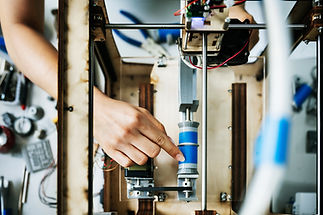In the futuristic cartoon show from the 1960s, The Jetsons, George Jetson commutes to work in a flying car and has a robot housekeeper named Rosie to take care of the cooking and cleaning. Many other aspects of life in The Jetsons future were automated, with push button food and other robotic conveniences.
While we still don’t have flying cars, a version of self-driving cars is already here. Automation, artificial intelligence (A.I.), and robots have created efficiencies in many of today’s industries, and technology continues to improve business productivity overall. Looking to the future, we can imagine the ways that robots, self-service, and automation might change the tourism landscape in destination towns.
Increased automation could address one of the most pressing problems in resort communities: the shortage of workers. When labor costs become increasingly expensive, investment in robotic technology looks more attractive. While businesses struggle to find enough employees for all shifts, the result is shortened hours and days of operation and/or long wait times for guests. These staffing shortages have accelerated efforts on the part of businesses to automate tasks or put some of the burden on the customer, such as self-checkout at the lunch cafeteria. “One big upside [of automation] is the ability to provide sustained operations for the guest,” noted Carl Ribaudo of SMG Consulting and Insights Collective.
Indeed, in a survey of mountain town leaders conducted by RRC Associates and Ski Area Management magazine in November 2021, 45% of resort leaders said that they are investigating a greater level of self-service or automation to deal with the workforce shortage. Food & beverage, rental shop, administration staff, ticket sales, and lift operations are the most common departments where mechanization is being considered. How could robots or other automated technologies work in mountain resort communities to help alleviate the worker shortage and associated housing challenges?
At the Winter Olympic Village in Beijing, robot bartenders are serving food and drinks to athletes and coaches and dispensing hand sanitizer in the hallways. Robots are being used in part for China’s “Zero Covid” efforts, but their application could be an interesting tactic to reduce the need for human workforce (and housing for that workforce). California vineyards have been using grape-picking robots to replace hard to find manual workers. A new company is developing a commercial restroom cleaning robot. These examples prompt ideas about how to apply robot technology in other ways in the tourism industry.
Image a future with more technology and automation at your destination. Already, most ski areas use RFID gates to allow access to the lifts, reducing the need for ticket checking workforce. What if self-driving cars could drop people at a busy location – a summer trailhead, a winter ski parking lot, a concert or special event – and then park elsewhere, or even shuttle back to pick up more people? What if ski lift loading could be automated, monitored by A.I. cameras and software? Could a snowcat groomer become a self-driving vehicle? How about self-guided ski and snowboard lessons, with video feedback from a robot instructor? These possibilities may seem far-fetched right now, but certainly could become reality at some point in the (possibly distant?) future.
Machines and technology have already made work in the tourism industry more efficient – think a dishwashing machine in a restaurant or a self-check-in kiosk at a hotel. But at what point do robots go too far in terms of removing the human touch from the experience? Where is the line where customers appreciate the efficiency of technology versus losing the personality and interaction from a person? “Human interaction provides a dopamine hit that can’t be recreated with a machine or iPad. How does a machine make you feel like you’re part of something really special at a resort?” asks Tom Foley of Inntopia and the Insights Collective.
The level of customer service that many visitors demand could be at odds with the trend towards replacing human workers with robots. And indeed, focusing on the empathy and connection that humans are capable of providing to other humans is something robots can’t do (yet). As tech journalist Kevin Roose discussed in a recent TED Talk, workers “can focus on your humanity and doing the things that machines can't do, bringing all those human skills to bear on whatever your work is.” The same can be said for destinations overall – bring human empathy, humor, and kindness to interactions with your visitors, even if some tasks are outsourced to robots.
Perhaps robots and other A.I. technology could ultimately become a factor that hospitality businesses and destinations compete and differentiate on. Some destinations might go heavy on technology and attract a customer who values the efficiency and appreciates the futuristic environment. Other destinations could use more traditional service delivered by humans as a key selling proposition for its clientele. Either way, the future will be here soon enough, flying cars or not.
About The Insights Collective
The Insights Collective is a not-for-profit collaboration of destination travel industry experts working together with mountain resort community stakeholders to understand, plan, and navigate the pandemic-influenced economy and its many unintended consequences


